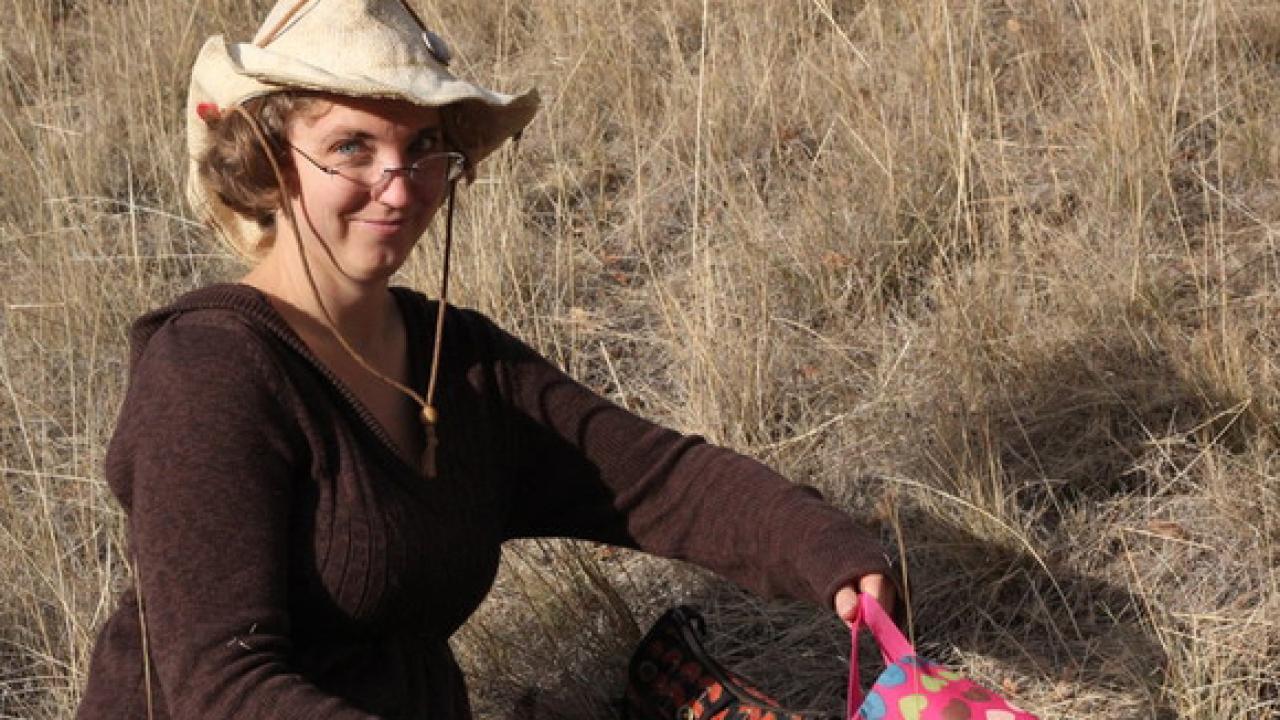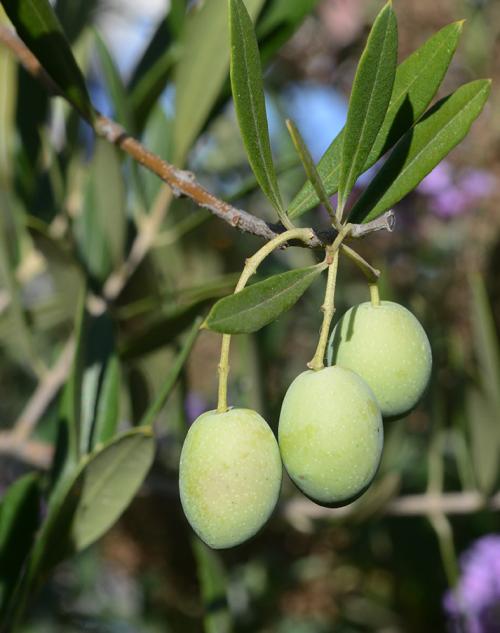
Meet Amanda Hodson: Improving Soil Health and Managing Pests in Agroecological Systems
She's a UC Davis Doctoral Alumna Whose Work Integrates the Fields of Nematology, Acarology, Biogeochemistry and Molecular Biology

Meet UC Davis doctoral alumna Amanda Hodson, assistant professor of soil ecology and pest management, and one of the newer members of the UC Davis Department of Entomology and Nematology (ENT) faculty. She coordinated the department's seminars for the 2024-25 academic year.
Her lab's main scientific goal "is to learn how to more sustainably manage agroecological systems to control pests and improve soil health. Our work integrates the fields of nematology, acarology, biogeochemistry, and molecular biology."
Hodson, who holds a doctorate in entomology from UC Davis (2010) and a bachelor’s degree in biology, magna cum laude (2004), from the University of New Mexico, Albuquerque, has been heavily involved with UC agroecological research since 2010.
Her career has taken her from Stockton to UC Davis:
- March 2010-December 2010: Staff Research Associate, UC Cooperative Extension, Stockton.
- December 2010-February 2015: Postdoctoral Researcher, UC Department of Land, Air, and Water Resources
- April 2015-March 2017: Project Scientist, UC Davis Department of Entomology and Nematology
- March 2017-November 2022: Assistant Professional Researcher, UC Davis Department of Entomology and Nematology
- November 2022-Present: Assistant Professor, UC Davis Department of Entomology and Nematology
Hodson, a member of the Society of Nematologists, California Nematology Workgroup, and the Soil Ecology Society, has co-authored five publications this year (to date) in the journal, Applied Soil Ecology:
Stacking Soil Health Practices Is Necessary to Enhance Soil Ecosystem Multifunctionality of Semi-Arid Almond Agroecosystems; Influence of Recycled Organic Waste Amendments on Carbon Pools, Greenhouse Gas Emissions, and Nematode Indicators of Soil Health; Cover Crop Composition Influences Soil Health and Nematodes in a Mediterranean Almond Orchard System; Influence of Recycled Organic Waste Amendments on Carbon Pools, Greenhouse Gas Emissions, and Nematode Indicators of Soil Health; and Cover Crop Composition Influences Soil Health and Nematodes in a Mediterranean Almond Orchard System.

She is the lead author of “Nematodes of Olive,” published in 2024 by the UC Statewide Integrated Pest Management Program (UC IPM), UC Agriculture and Natural Resources (UC ANR). In the publication, Hodson defines nematodes as "true roundworms that are microscopic."
"Several species of nematodes are damaging to olive, including the citrus nematode (Tylenchulus semipenetrans), root lesion nematode (Pratylenchus vulnus), and root-knot nematodes (Meloidogyne spp.)," she writes. "All root-invading nematodes cause roots to be less efficient in transporting water and nutrients, which leads to reduced growth, reduced fruit production, and decline of the tree. Root-knot or citrus nematodes may be damaging to the root system if relatively high numbers are present, but root galling is only associated with root-knot nematodes.”
Hodson describes root-knot nematodes are “endoparasites, invading the root tips and establishing permanent feeding sites inside the root. Their feeding stimulates the root tissue to enlarge, forming giant cells called galls on which they continue to feed. Since galls are essentially enlarged root tissue, they cannot be rubbed off. Eventually individual galls will coalesce giving the root a bumpy swollen appearance, without any fine feeder roots. Trees become slightly weaker, especially in sandy areas, and fruit size on infected trees is reduced.”
From Northern New Mexico
Hodson grew up in the “southernmost part of the Rocky Mountains in Northern New Mexico. It's beautiful there and the food is amazing.”
Interested in nature since early childhood, she remembers playing with worms. “I was for sure one of those kids that liked to play with worms. I made a little worm circus once. I also liked 'inventing' things, like a booby trap to catch Santa Claus."
When asked if she is the first nematologist in her family, she responded: “Sort of. My grandfather was a veterinary pathologist, so I'm sure he knew a thing or two about nematodes."
What drew her to study nematology? “I knew that I wanted to study biology and I later refined this to agricultural systems after an internship studying insects in the jungle of Costa Rica, which was wonderful, but chaotic, and involved encountering too many poisonous snakes."
"When I applied to graduate school, Ed Lewis, who became my advisor, actually called me on the phone and asked Have you ever considered nematodes? I knew what a nematode was, but that was about it. He told me about his research on insect parasitic nematodes, I read some papers and thought..hey this could be fun! An undergraduate advisor warned me to actually NOT study nematodes for my PhD, because he said I would never get out of the business once I was in it. I told him not to worry that it was just a PhD. He was right but I'm happy that I chose the nematodes!” (Lewis left UC Davis as professor emeritus in 2014 to join the University of Idaho faculty and administration; he is now retired from U of I).
'Exciting and Satisfying'
Some highlights of her career so far?
“When I think of this, I remember all of my adventures and misadventures in the field, from deserts, mountains and jungles, to orchards and tomato fields. Each place feels so 'real' and uniquely beautiful in its own way. Whenever I go out into the field, I never know what will happen or what I will find, it's exciting and satisfying. I also remember all the wonderful people I got to share those adventures with and I also think of all the insects, mites and gorgeous shining nematodes I've seen and the stories they tell.”
What does she do you do in her leisure time? “I love messing around in my garden, especially troubleshooting irrigation systems, also I love reading old books. If anyone ever wants to discuss classic literature let me know.”
What do people NOT know about her or would be surprised to learn? “I have a certification to teach yoga that I'm rather proud of.”
